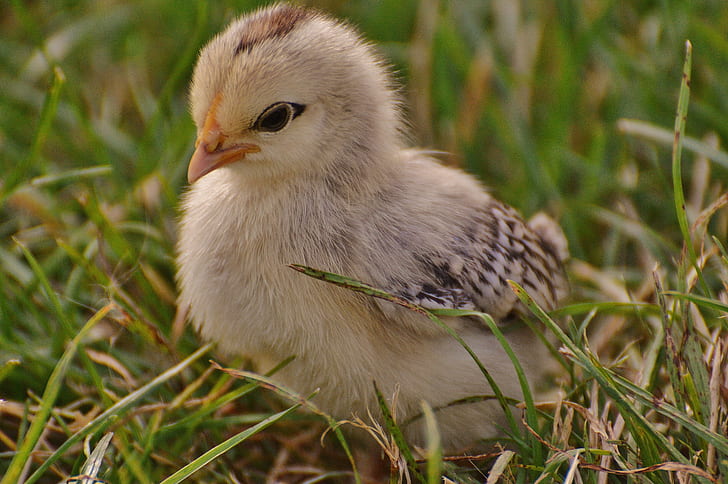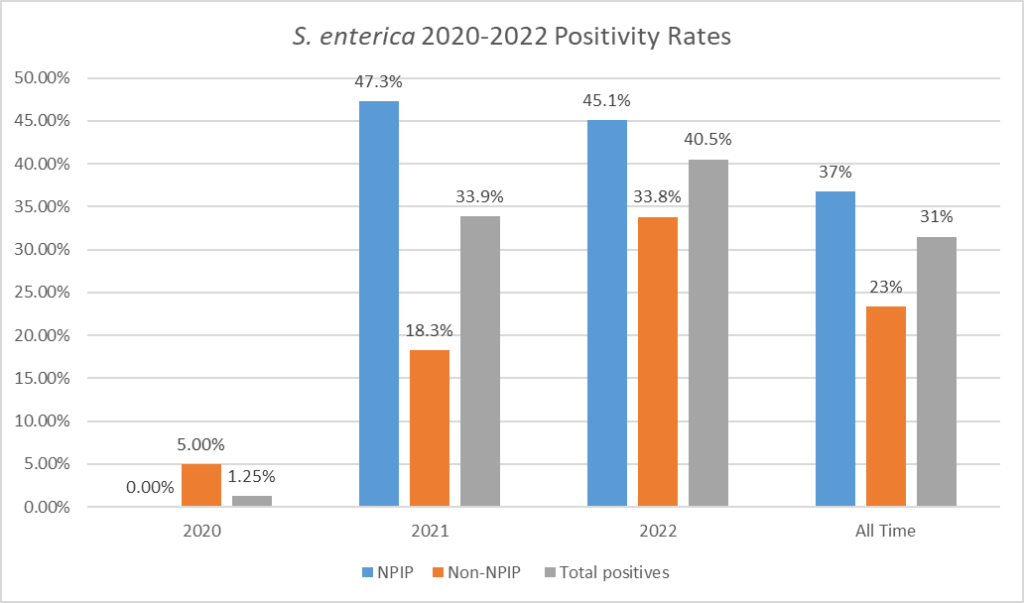
2022 was our third year of agricultural supply store sampling for Salmonella. We sampled at 9 stores across Vermont, collecting a total of 195 samples from March-July 2022.
So, what did we find?

Overall positivity rates were slightly higher this year (40.5% vs 34%). Hatcheries not participating in NPIP Salmonella monitoring programs had higher rates of Salmonella in 2022 than 2021, but we added a new hatchery for that category this year and had more samples overall in the non-NPIP category. Hatcheries participating in Salmonella monitoring programs had roughly the same rate of Salmonella as in 2021.
Breaking out the data by hatchery, you can see that there are differences in Salmonella rates between hatcheries, you can see that Hoovers hatchery has the highest rates of Salmonella, while Townline had the lowest. NOTES: We only have one year of data for Ridgeway, so that rate may change as we get more years of data and samples. Hoovers store A had the lowest biosecurity, which may explain the high rates of Salmonella, but Store B still had higher rates of Salmonella than any other store.

Takeaways?
- Salmonella is super common in baby chicks sold to hobby poultry enthusiasts
- Hatchery participation in the NPIP Salmonella monitoring program does not improve Salmonella rates in chicks
- You should assume baby chicks have Salmonella and take precautions
- Don’t let kids put chicks near their face. Chicks are messy and will have poop on their legs and possibly feathers
- If you let kids pet the chicks (which is ok), make sure they wash their hands thoroughly afterwards
- Don’t put chicks in the kitchen; dust can contain fecal particles.
- The best place for chicks is a basement, warm garage, or unused bathroom–something that isn’t in the main part of the house and harder for any small children to access.
- Don’t wash chick water containers or feed containers in the kitchen sink. A bathtub or utility sink is better
—Dr. Etter